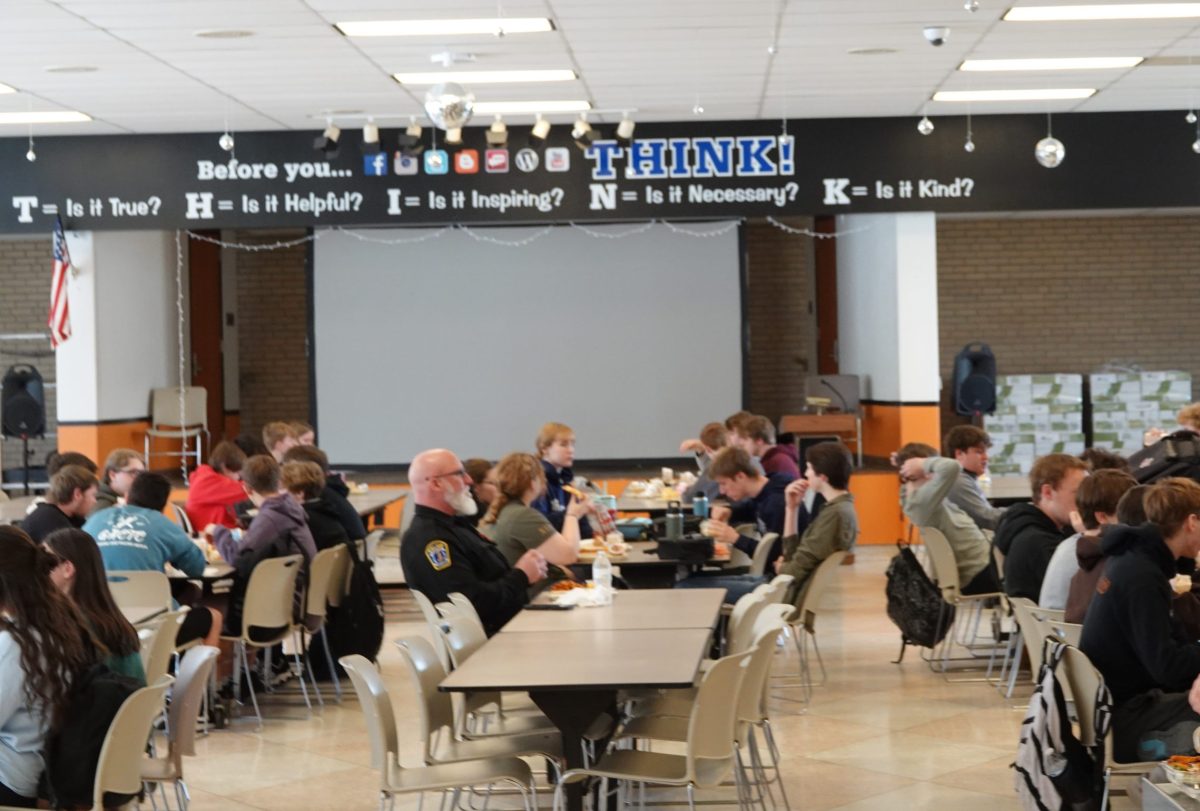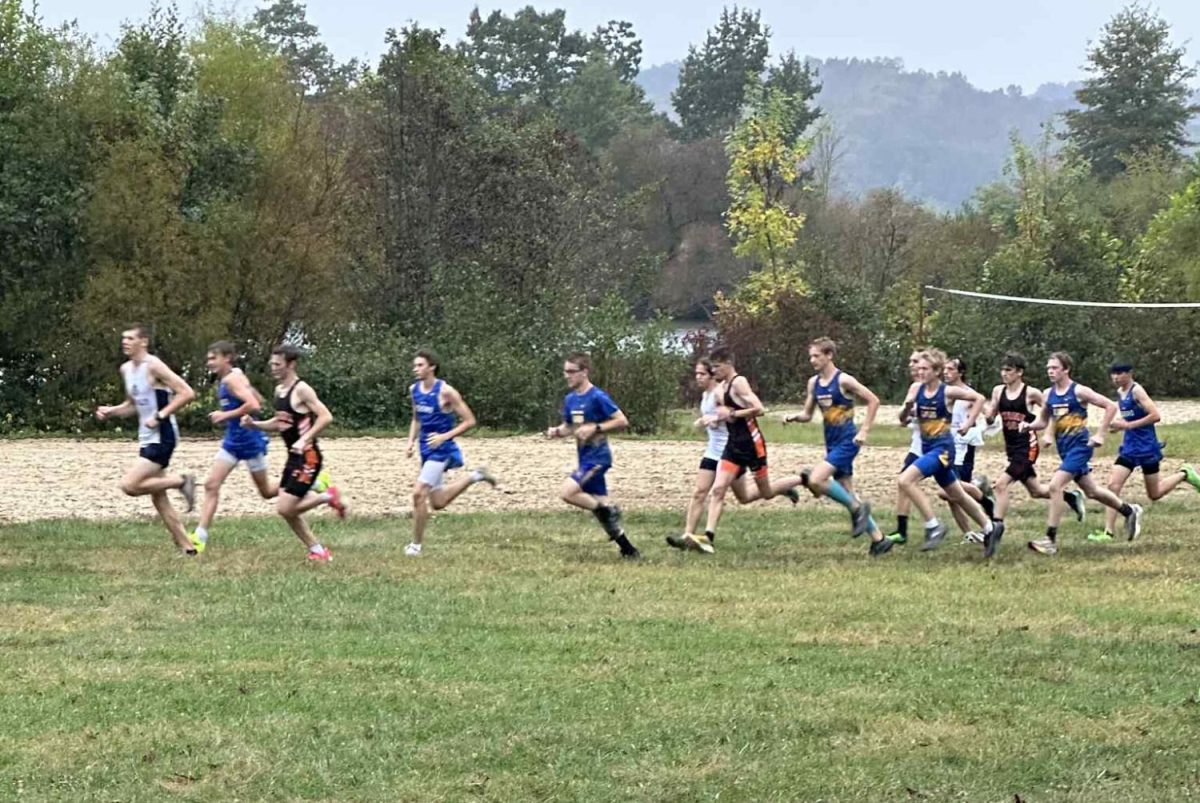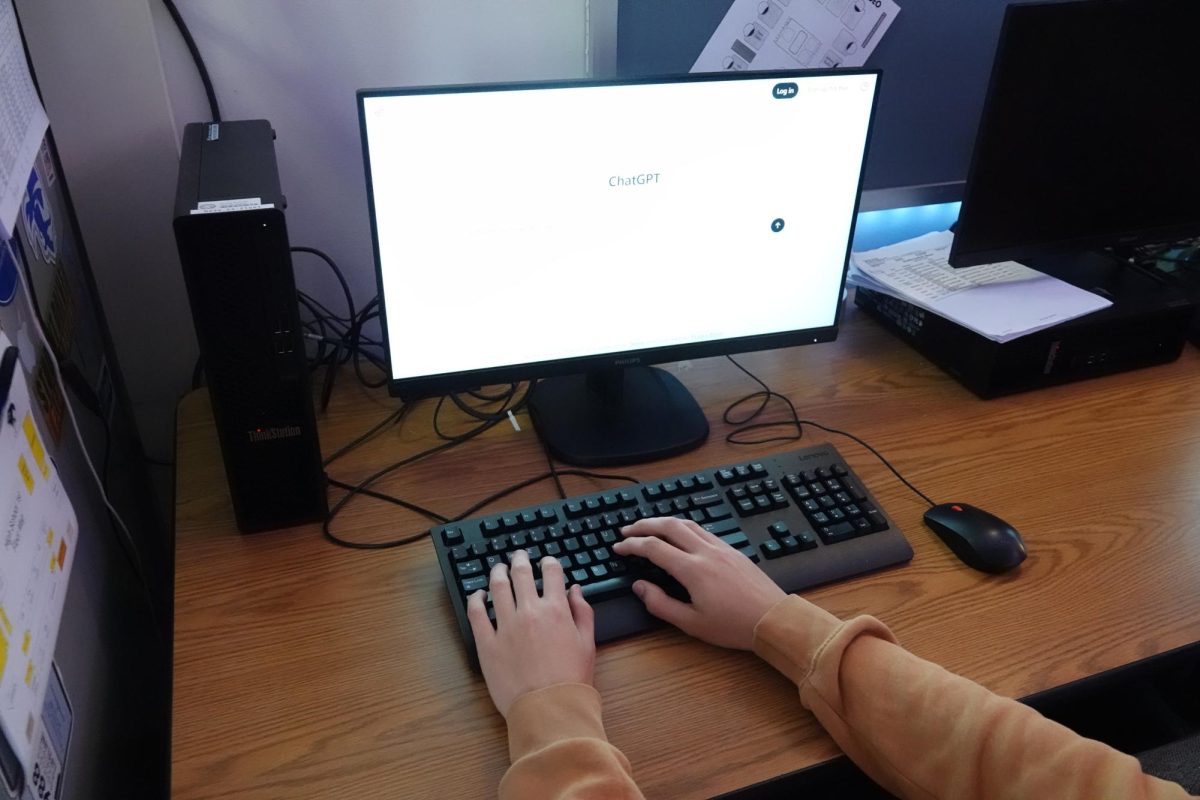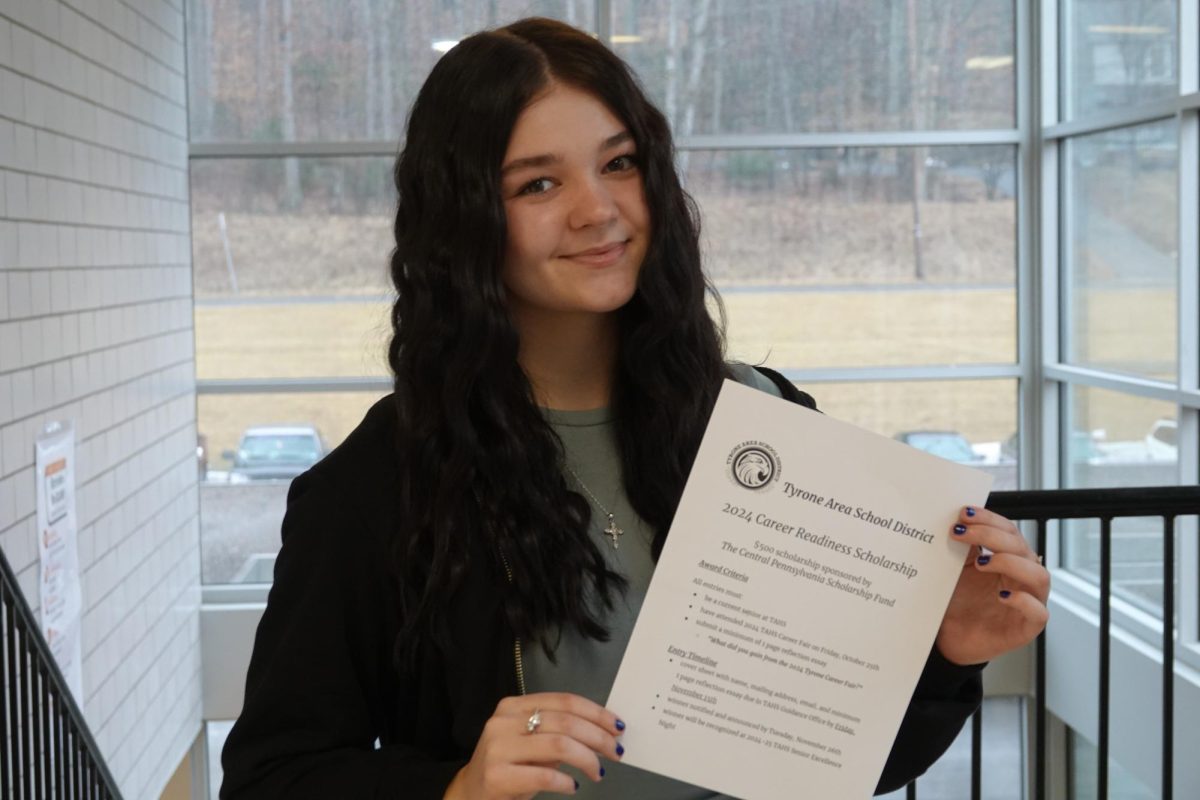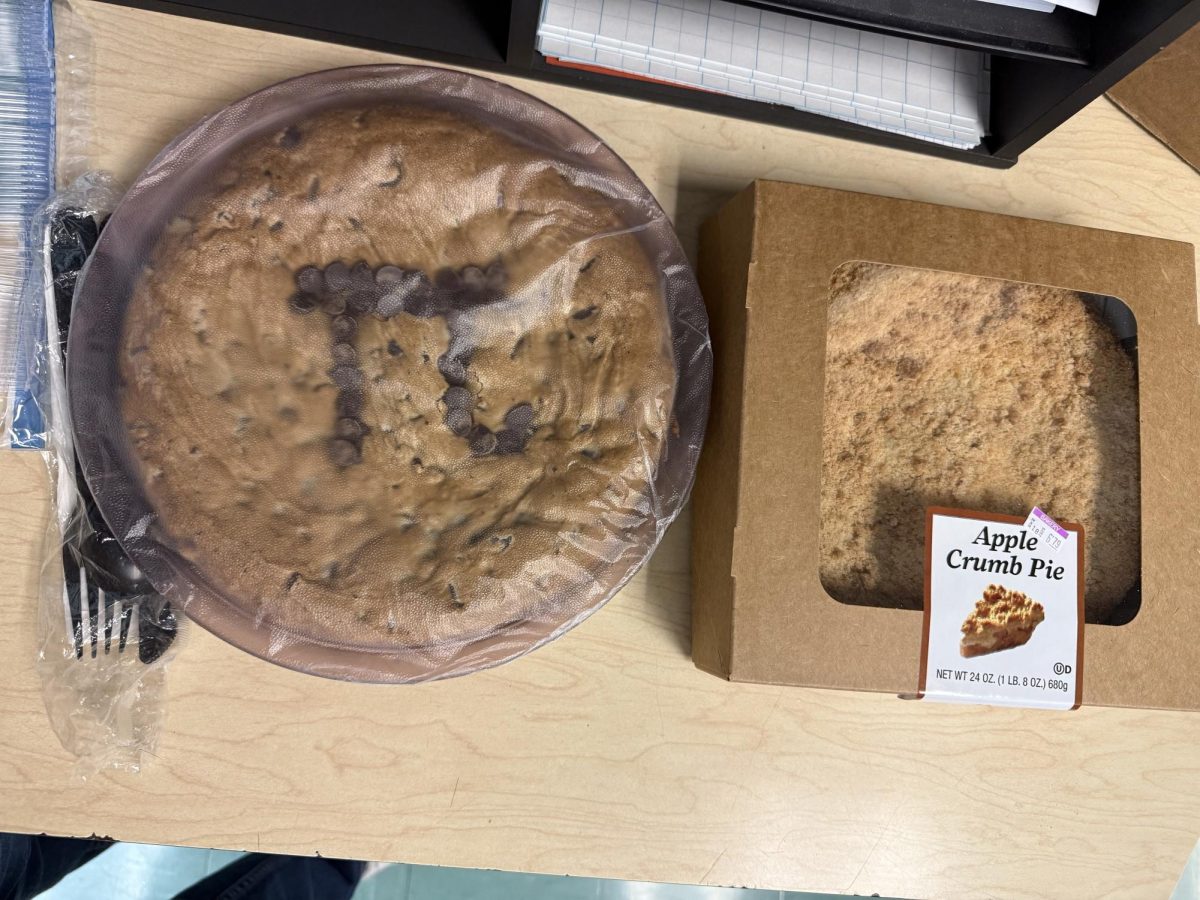In a recent Eagle Eye school lunch satisfaction survey, the most common complaint about the school lunches, made by 75% of the students surveyed, was that the portion sizes are too small.
In response, Tyrone Director of Food and Nutrition Dani Dempsie would like students and parents to know that there are many items offered every day for lunch, that lunches served at all TASD cafeterias meet or exceed minimum federal guidelines for portion size, and one of the reasons portion sizes may seem small is because students don’t always choose to take everything that is available to them.
According to Dempsie, the portion size of each part of a school lunch is federally regulated and monitored to ensure that every student acquires the same amount of nutrition.
“We have to abide by these guidelines or we lose our sponsorships and opportunities that we are so grateful for,” Demspie said.
In elementary and middle school, by federal regulation, each student must receive a minimum of one ounce of protein, one ½ cup of fruit choice, one ½ cup of vegetables, two ounces of grains, and one cup of milk.
In high school, students must get at least two ounces of meat or meat alternatives, and instead of one ½ cup fruit choice, high school students get two fruit choices.
The federal guidelines are for minimum portion size. However, according to the USDA, “school meals that exceed the weekly maximum limits are compliant, provided that meals meet the weekly dietary specifications. Schools receive the same per meal reimbursement, whether the minimum requirements are met or exceeded.”
Dempsie said that almost all the lunches served at TASD exceed the minimum guidelines.
“We offer two ounces [of meat] each day at all grade levels to ensure we reach the minimum requirement per week,” Dempsie said. “While the minimum number of grains for K-8 per day at lunch is one ounce, the minimum number of grains required for the week is 8-9 ounces. So if we only served one ounce each day, we wouldn’t meet the minimum weekly requirement.”
All TASD Cafeterias follow USDA Guidelines for the number of food items each student may take. “For lunch service, students may take three to five items. One of those items is required to be a fruit or vegetable,” Dempsie said.
The issue is sometimes students do not take everything they are allowed to, which makes the lunch smaller.
In addition to the items included in a regular lunch, if students are still hungry there is another way to obtain extra food at no cost.
Dempsie said that the cafeteria has recently introduced a “share table” at the high school cafeteria.
If a student doesn’t want an item, they can place it on the share table and another student can take it at no cost.
Share table items are limited to pre-packaged foods only or whole fresh fruit.
The middle and elementary schools have had a share table for several years, but it is new to the high school this year.
According to Dempsie, the TASD cafeteria is staffed by 27 workers, and they take great care in preparing and serving the meals.
“The love and compassion that these ladies put into these meals is incredible. What we do offer, if there is a mistake, it’s not intentional…the ladies care so much and feel terrible about mistakes or errors that may happen,” Dempsie said.
Dempsie said that they are constantly listening to student feedback, and encourage students to share their opinions with her.
The staff makes new menus every month based on popularity, stock, availability, guidelines, shelf life, freshness, and cost.
There is also the option for reimbursable meals from the Café, as long as the student takes the required items.
So, the next time a student visits the cafeteria, they now know what their options are, and maybe they’ll go home a little less hungry.



